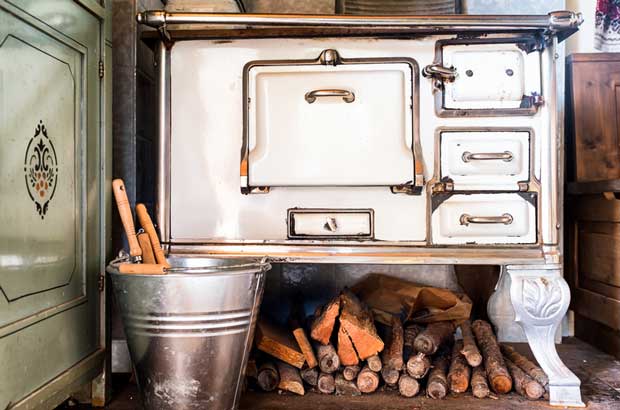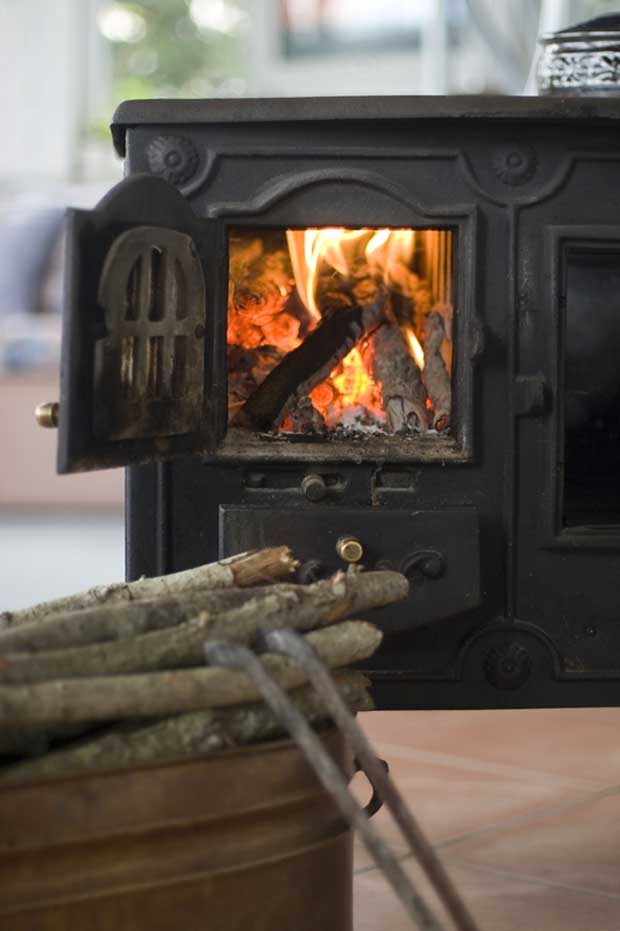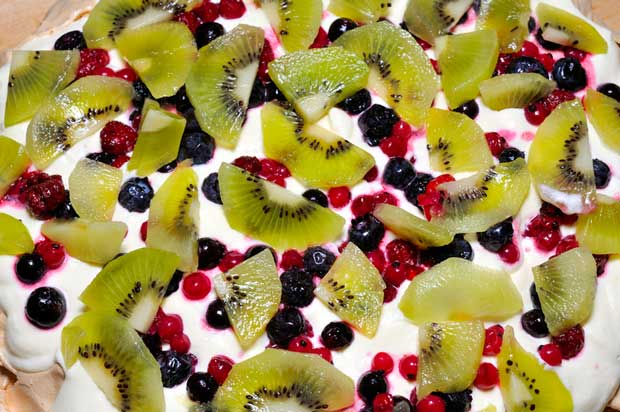A beginner’s guide to wood burning stoves

Fans of the wood-burning stove explain why they find an old-fashioned form of cooking far more satisfying than modern gadgetry.
Words Nadene Hall
Ann Craig has had two great loves in her life; her husband Peter, and a series of beloved wood-burning stoves that have cooked the food for her family for over 50 years. Her daughter is Jean Mansfield, NZ Lifestyle Block magazine’s former cooking expert and cheese-maker, and Jean says her mother has no time for modern ovens.
“They built their last house and they put in a really flash, stainless steel electric oven and right next to it they had a wood stove. That electric oven looked exactly as it did the day it was installed, she hardly used it, except on the odd occasion if they got home late.”
These days retirement and a move to town has meant Ann can’t have a wood burning stove, as they are not permitted in her suburban area due to new rules on emission ratings.
“They are the best things in the world, I don’t think there’s anything in my life that I can compare to a range because I love them so much. I’d give anything for one! To me it’s a friend that keeps you warm.”
The wood-burning stove – or coal range to Ann – was a big part of rural life and her constant companion throughout a working day. “I got up at 6am and the first thing I did was go to the kitchen, I would pull out the (range) ash tray, take it outside, empty it. We lived in the bush, so I was very careful and I would hose (the ashes) and dampen them down, no matter how cold.”

Lighting the range was easy and within 20 minutes the whole house – courtesy of a radiator system – a copper kettle of water and the hot water cyclinder would all be nicely warmed.
Ann’s wood of choice was tea tree (manuka), all carefully cut, stacked, dryed and carted into the house by husband Peter. “I have to say, I love tea tree and Peter always left me heaps to use, he knew he had to make sure I had tea tree because it got the fire up. Black wattle is also very good.”
Mike and Joy Westwood agree. The Kohukohu couple have owned a Wagener wood-burning stove for five years and use manuka, black wattle and gum for a good, slow, hot burn.
“It makes it easier to maintain the oven at an even temperatures,” says Joy. “These cookers are not incinerators (so you need to) avoid the old days of the chip heater and the “burn anything” attitude. By using dry seasoned wood of a good mix type a good heat will be achieved in a very short time.”
For B&B owner and wood-burning stove fan Douglas Richards, macrocarpa is the wood of choice for the same reason, as it maintains a consistent temperature when burning. Like Ann Craig, he loves his Wagener cooker – when he moved from Wanganui to Ohakune, he took his stove with him!
A good companion for a wood-burning stove is an old copper kettle, something Ann Craig recommends every new owner of a wood-burning stove has sitting on the heat throughout the day, so a hot drink is never far away.
BEGINNER’S TIPS
1. Add a little rosemary or lavender to the firebox when you add some wood – the smell will gently permeate the house. A little eucalyptus firewood has a similar effect.
2. Make a pot of soup and leave it sitting on the back of the stove – the gentle heat will keep it warm and if it starts to get too thick, just add more water.
3. Be organised with wood and kindling dried properly and cut to size. “You don’t want to be running outside trying to bring wood in, then falling over in the wet and hurting yourself.”
4. Buy a stove with a good thermostat on the front.
5. If you’re considering buying a second-hand wood-burning stove, make sure the dampers and flue work properly and check the firebox for signs of rust – it’s best to actually see it in action before you buy. “We bought one from an auction but it was cracked inside and it was terrible. In the end we had to pull it out.”
6. Timing in a wood burning stove needs just a little more thought than with your electric oven says Joy Westward, so you build up a good hot fire with a thick layer of embers. “Although it may appear to take more wood to achieve this heat than what one would expect, the real saving comes when you damper the fire down and from then on wood consumption is extremely minimal.”

7. When you’re working with your cooker, John Lintott of wood stove supplier Broadys recommends creating a ‘thin’ fire, rather than a ‘thick’ one. “It is better to add fuel one or two pieces of wood at a time; this gives a more even heat and gives less deposit in the flue ways.”
8. You may need to bake cakes at a slightly lower temperature (160-165°C) instead of the standard 180°C says Wagener cooker fan Douglas Richards. He finds this way takes a little more time but the results are superior. “(My) cake is moist for a far longer period, up to six days.”
9. The different consistency in food is the big difference for Ann too, with her favourite cooker of all being an old Shacklock. “Cakes are much more moist, roast lamb just falls off the bone, roast vegetables, rice pudding is beautiful. You can burn things – don’t think you can’t – but if you check the firebox, keep it at that nice heat… that’s why I liked using coal, the coal burns down and you get that lovely level heat.”
10. Roasting cheaper cuts of meat with a long, slow cooking time is a great way to save money and get beautifully cooked meat says John Lintott of Broadys. “With the indirect heat of the oven, roasts are succulent and moist, with less shrinkage.”
11. You won’t need to buy new cookware but Ann and Joy both agree that nothing beats cast iron cookware, with Joy favouring the Chasseur range. Cast iron works well because it quickly absorbs heat and it spreads evenly through a dish or pot.
CAN YOU COOK A PAVLOVA?
Pavlova comes in for special mention, and both Ann and Joy say they were quite daunted at the thought of making a pav in their wood-burning stoves. “I thought I’d never be able to make a pav, I would never be able to keep it at a steady heat, even though I’d been cooking (on a range) for a long time,” says Ann. “But I kept checking the firebox and that’s why a good thermostat is so important.”
Joy agrees and says this is why she loves the new way of cooking that a wood-burning stove has opened up for her.
“The thought of being able to make a pavlova may seem a little daunting as you are unable just to flick a switch or turn a knob to cut the heat. (But by) decreasing the oven heat by opening the door in increments, (you) achieve a slow cooling oven which is required for the drying of the outer of the pavlova.”
MAINTENANCE
The great thing about the interior of a wood-burning oven is it’s self-cleaning – any spills just turn to carbon and can be swept out. However, everyone who owns a wood-burning stove recommends a little care, daily, keeps a cooker clean and working more efficiently.
“Maintenance of your cooker does play a large part in how your cooker performs,” says Joy Westward of her Wagener. “Once a week we tap the flue just above where it fits into the cooker, which dislodges build-up. By doing this you are guaranteed of good airflow, which is critical to all fires, giving greater control over the options of surface plate cooking or use of the oven.”
Ann Craig says after hearing a bad story many years ago, she always made sure she cleaned and checked her stoves. “I do know of an instance with a lady who didn’t clean it (the firebox) and it caught fire and it burnt the whole back of the range, so you must be careful.”
Ann gave all her stoves a daily wipe down with newspaper (no black hands or black cloths and then it could used in the fire) and emptied the firebox every three days, without fail.
“Once a week you must let the range get cold and then clean it. On the old ones you use Zebo and then when it dries you polish it off with old cloths. I knew it was a weekly job and it was just like there are things that have to be done.”
Love this story? Subscribe now!
 This article first appeared in NZ Lifestyle Block Magazine.
This article first appeared in NZ Lifestyle Block Magazine.
